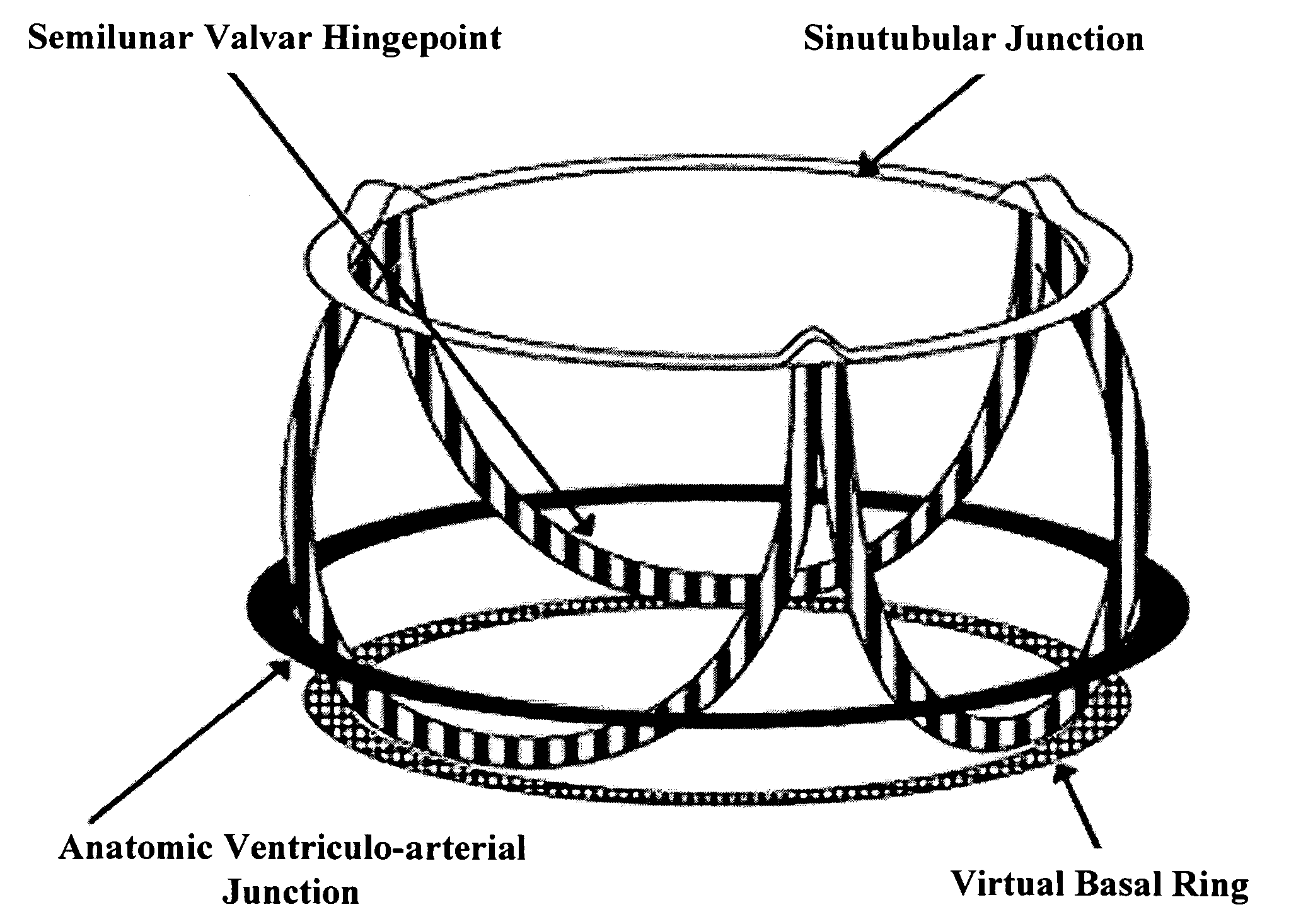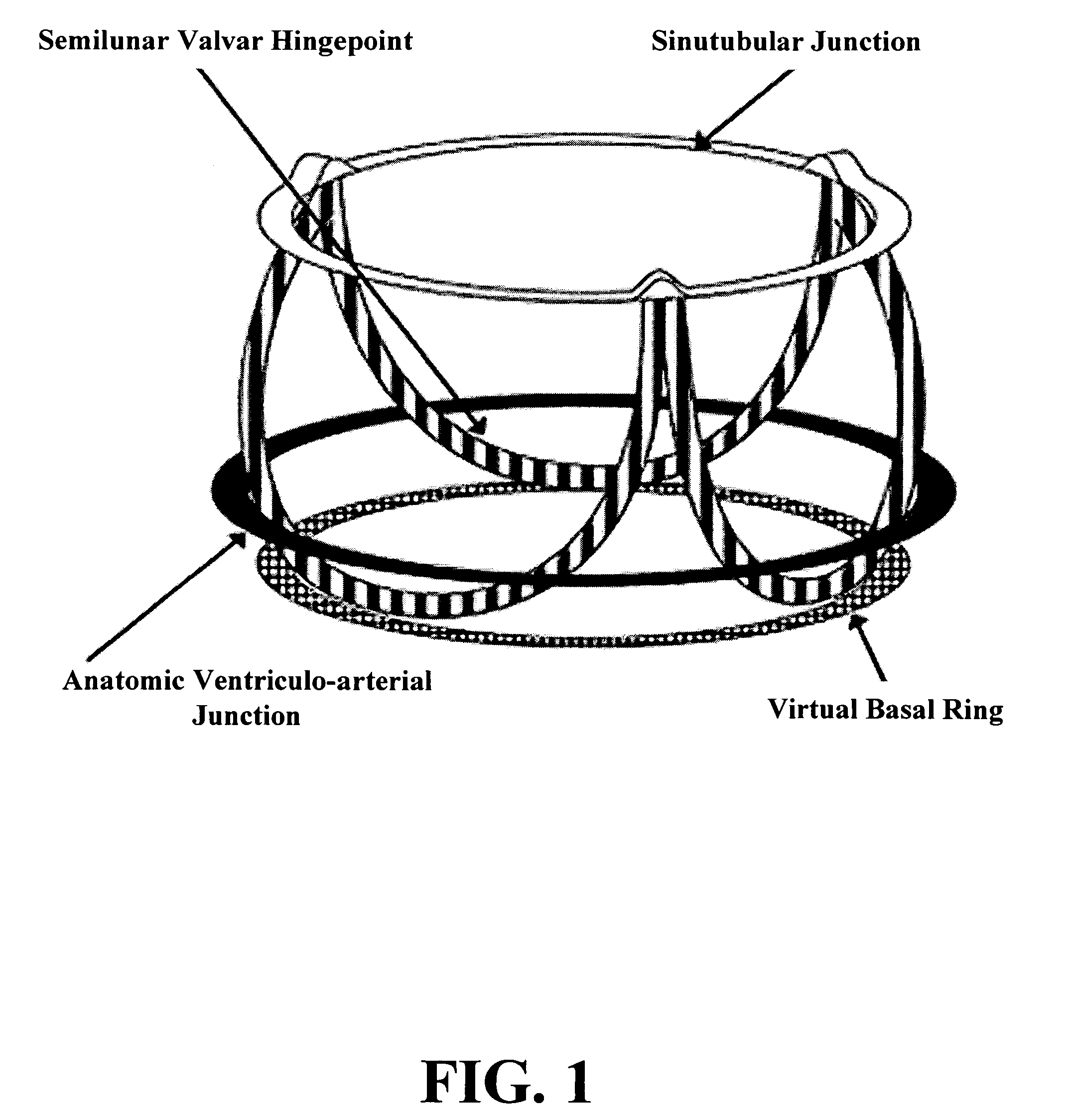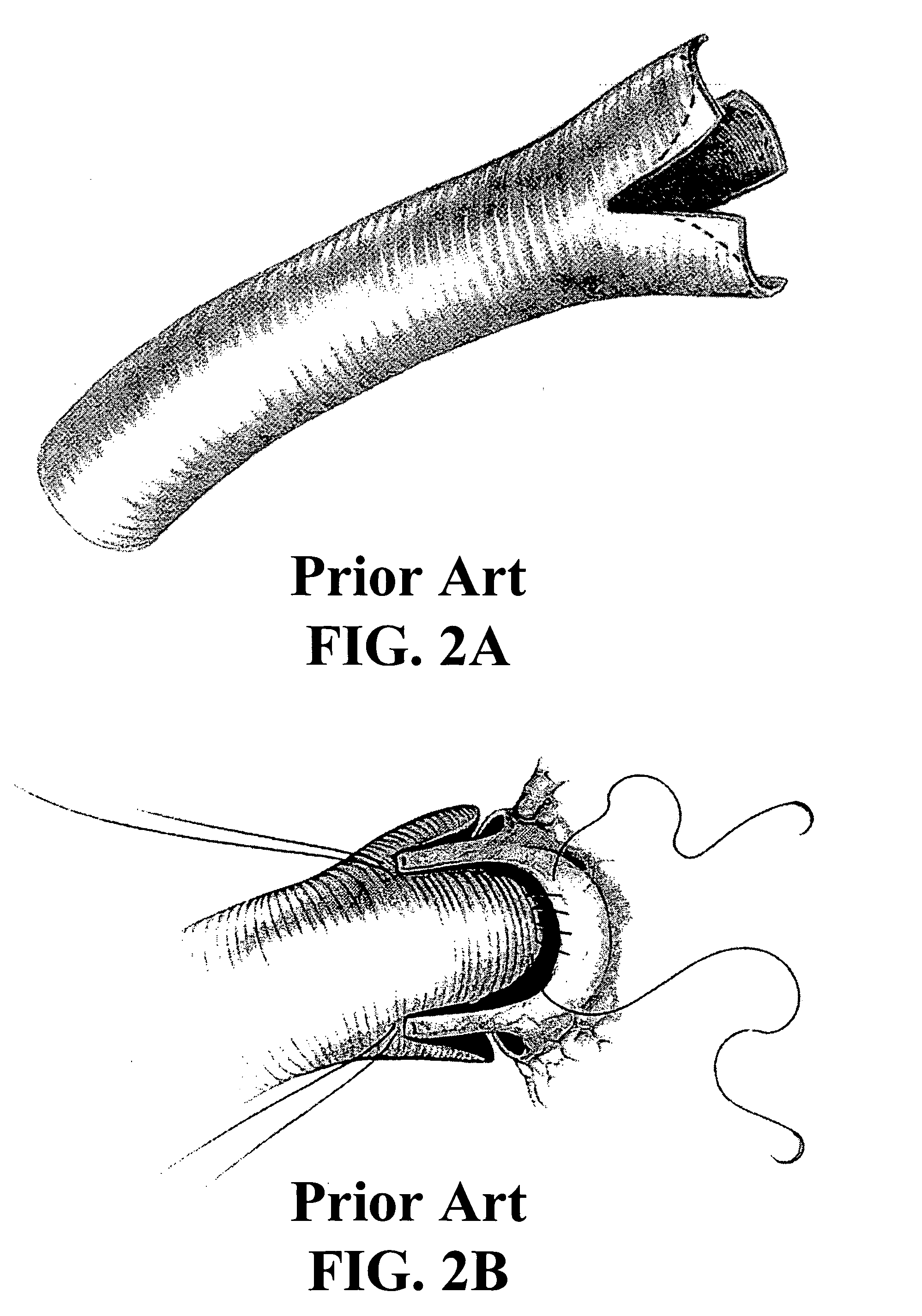Cone-shaped aortic root replacement graft and methods for making and using same
a graft and aortic root technology, applied in the field of new aortic root replacement grafts or apparatuses, can solve the problems of affecting the function of proper valves, the inability to open and close native valves optimally, and the risk of reducing valve longevity
- Summary
- Abstract
- Description
- Claims
- Application Information
AI Technical Summary
Benefits of technology
Problems solved by technology
Method used
Image
Examples
Embodiment Construction
[0040]The inventor has found that a new prosthetic aortic apparatus can be constructed, where the apparatus includes at least two major sections a substantially straight cylindrical section and an outwardly flared end section or conical end section. The sections can be adapted to have elasticity in the lateral and / or longitudinal directions as desired. The elasticity can either be an aspect or characteristic of the material out of which the sections are constructed or the sections can be constructed so that their structure supports elasticity in one or more directions. The apparatus can be a unitary construction having different materials or material orientations in the different sections or the apparatus can be a construction were two or more sections are affixed together to form the final apparatus. The apparatuses can also include an artificial valve associated with the flared section if valve replacement is also warranted; of course, the natural aortic valve / annulus complex can ...
PUM
 Login to View More
Login to View More Abstract
Description
Claims
Application Information
 Login to View More
Login to View More - R&D
- Intellectual Property
- Life Sciences
- Materials
- Tech Scout
- Unparalleled Data Quality
- Higher Quality Content
- 60% Fewer Hallucinations
Browse by: Latest US Patents, China's latest patents, Technical Efficacy Thesaurus, Application Domain, Technology Topic, Popular Technical Reports.
© 2025 PatSnap. All rights reserved.Legal|Privacy policy|Modern Slavery Act Transparency Statement|Sitemap|About US| Contact US: help@patsnap.com



